Mary Swanzy HRHA (1882-1978) Cubist Landscape Oil on canvas, 38 x 44cm (15 x 17.25'') Signed, also stamped with studio sale stamp verso Provenance: From the artist's estate through the family to Mary St. Clair Swanzy Tullo and her sale Christies May 2007. Mary Swanzy originally studied at the RHA and Metropolitan School of Art in Dublin, before spending time at various studios in Paris where she came into contact with cubist works by Pablo Picasso and Georges Bracque. These were to have a significant influence on the development of her style. As Cubist tendencies spread through Europe the style was adapted by various artists for various means. The Italian and Russian avant-gardes employed cubist styles for idealist political messages. The Futurists took on a dynamic cubist style to promote an apocalyptic aesthetic that was intended to signal a cleansing and new beginning for the Italian people, while the Constructivists used a more structured and concise form of cubism to endorse an modern egalitarian aesthetic that anticipated a unified proletariat population for Russia. Swanzy's take on cubism however was entirely her own and formed without the weight of political ideals, despite the fact that her main subject at this time was landscape, a historically loaded motif in Irish culture. Her cubist paintings display a dynamism and structure, yet she combined these in a unique way to create an aesthetic that explores latent structures and ruptures of organic forms. In Abstract Landscape Swanzy's cubist method seems to be guided by a search for an underlying current in the form of the landscape and an unveiling of it in an ocular manner. In this way Swanzy's work is much closer to that of the French originators of Cubism, as she seems more concerned with the transformation of the three-dimensional world onto a two-dimensional surface, stemming from Paul Cezanne's use of passage. The composition here is dominated by a sweeping, spiralling circular form that is not itself visible but is revealed in the way in which it appears to connect the elements and planes of the picture. Interestingly, this underlying form flattens the surface of the painting and yet gives it depth, guiding the eye back to the monument just right of the centre of the picture. Mary Swanzy HRHA (1882-1978) Cubist Landscape Oil on canvas, 38 x 44cm (15 x 17.25'') Signed, also stamped with studio sale stamp verso Provenance: From the artist's estate through the family to Mary St. Clair Swanzy Tullo and her sale Christies May 2007. Mary Swanzy originally studied at the RHA and Metropolitan School of Art in Dublin, before spending time at various studios in Paris where she came into contact with cubist works by Pablo Picasso and Georges Bracque. These were to have a significant influence on the development of her style. As Cubist tendencies spread through Europe the style was adapted by various artists for various means. The Italian and Russian avant-gardes employed cubist styles for idealist political messages. The Futurists took on a dynamic cubist style to promote an apocalyptic aesthetic that was intended to signal a cleansing and new beginning for the Italian people, while the Constructivists used a more structured and concise form of cubism to endorse an modern egalitarian aesthetic that anticipated a unified proletariat population for Russia. Swanzy's take on cubism however was entirely her own and formed without the weight of political ideals, despite the fact that her main subject at this time was landscape, a historically loaded motif in Irish culture. Her cubist paintings display a dynamism and structure, yet she combined these in a unique way to create an aesthetic that explores latent structures and ruptures of organic forms. In Abstract Landscape Swanzy's cubist method seems to be guided by a search for an underlying current in the form of the landscape and an unveiling of it in an ocular manner. In this way Swanzy's work is much closer to that of the
Mary Swanzy HRHA (1882-1978) Cubist Landscape Oil on canvas, 38 x 44cm (15 x 17.25'') Signed, also stamped with studio sale stamp verso Provenance: From the artist's estate through the family to Mary St. Clair Swanzy Tullo and her sale Christies May 2007. Mary Swanzy originally studied at the RHA and Metropolitan School of Art in Dublin, before spending time at various studios in Paris where she came into contact with cubist works by Pablo Picasso and Georges Bracque. These were to have a significant influence on the development of her style. As Cubist tendencies spread through Europe the style was adapted by various artists for various means. The Italian and Russian avant-gardes employed cubist styles for idealist political messages. The Futurists took on a dynamic cubist style to promote an apocalyptic aesthetic that was intended to signal a cleansing and new beginning for the Italian people, while the Constructivists used a more structured and concise form of cubism to endorse an modern egalitarian aesthetic that anticipated a unified proletariat population for Russia. Swanzy's take on cubism however was entirely her own and formed without the weight of political ideals, despite the fact that her main subject at this time was landscape, a historically loaded motif in Irish culture. Her cubist paintings display a dynamism and structure, yet she combined these in a unique way to create an aesthetic that explores latent structures and ruptures of organic forms. In Abstract Landscape Swanzy's cubist method seems to be guided by a search for an underlying current in the form of the landscape and an unveiling of it in an ocular manner. In this way Swanzy's work is much closer to that of the French originators of Cubism, as she seems more concerned with the transformation of the three-dimensional world onto a two-dimensional surface, stemming from Paul Cezanne's use of passage. The composition here is dominated by a sweeping, spiralling circular form that is not itself visible but is revealed in the way in which it appears to connect the elements and planes of the picture. Interestingly, this underlying form flattens the surface of the painting and yet gives it depth, guiding the eye back to the monument just right of the centre of the picture. Mary Swanzy HRHA (1882-1978) Cubist Landscape Oil on canvas, 38 x 44cm (15 x 17.25'') Signed, also stamped with studio sale stamp verso Provenance: From the artist's estate through the family to Mary St. Clair Swanzy Tullo and her sale Christies May 2007. Mary Swanzy originally studied at the RHA and Metropolitan School of Art in Dublin, before spending time at various studios in Paris where she came into contact with cubist works by Pablo Picasso and Georges Bracque. These were to have a significant influence on the development of her style. As Cubist tendencies spread through Europe the style was adapted by various artists for various means. The Italian and Russian avant-gardes employed cubist styles for idealist political messages. The Futurists took on a dynamic cubist style to promote an apocalyptic aesthetic that was intended to signal a cleansing and new beginning for the Italian people, while the Constructivists used a more structured and concise form of cubism to endorse an modern egalitarian aesthetic that anticipated a unified proletariat population for Russia. Swanzy's take on cubism however was entirely her own and formed without the weight of political ideals, despite the fact that her main subject at this time was landscape, a historically loaded motif in Irish culture. Her cubist paintings display a dynamism and structure, yet she combined these in a unique way to create an aesthetic that explores latent structures and ruptures of organic forms. In Abstract Landscape Swanzy's cubist method seems to be guided by a search for an underlying current in the form of the landscape and an unveiling of it in an ocular manner. In this way Swanzy's work is much closer to that of the
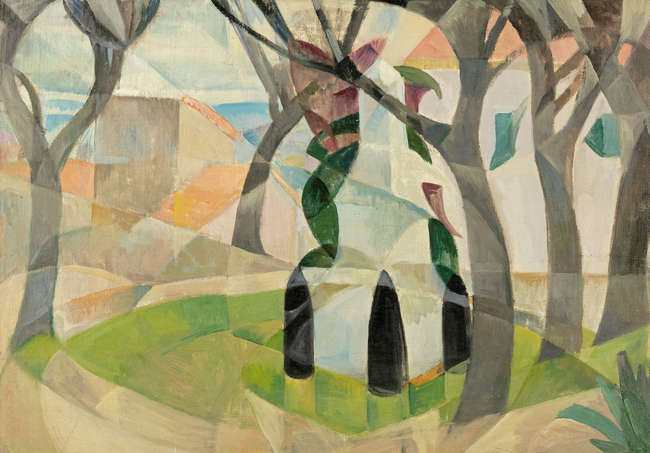

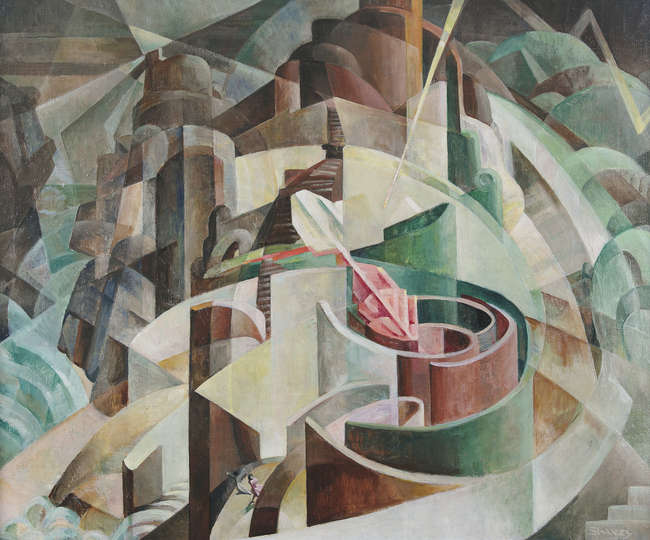


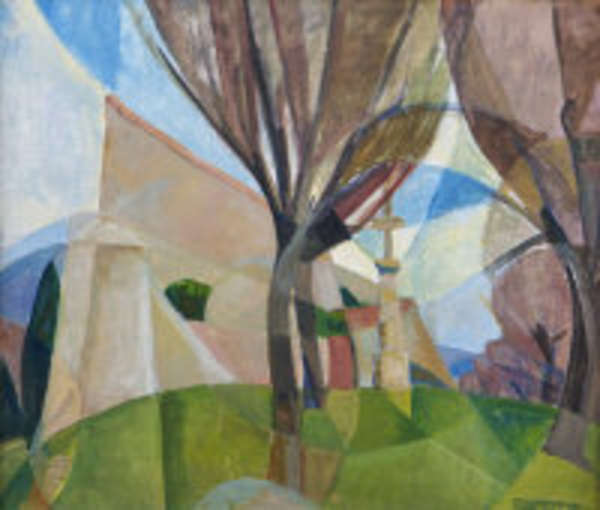

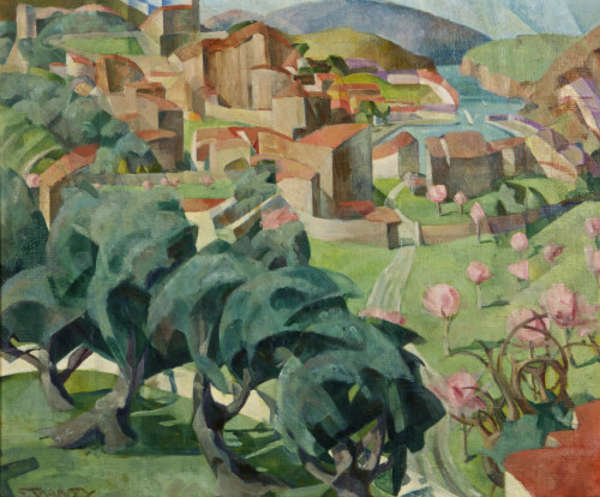
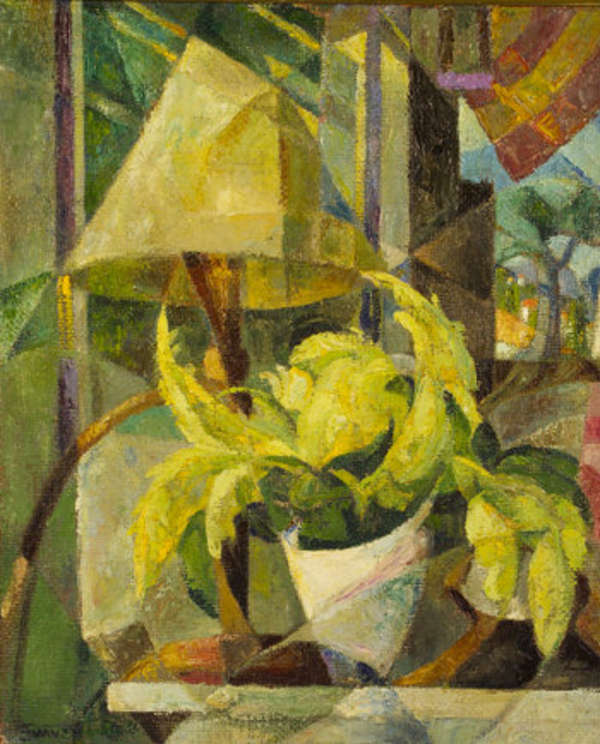
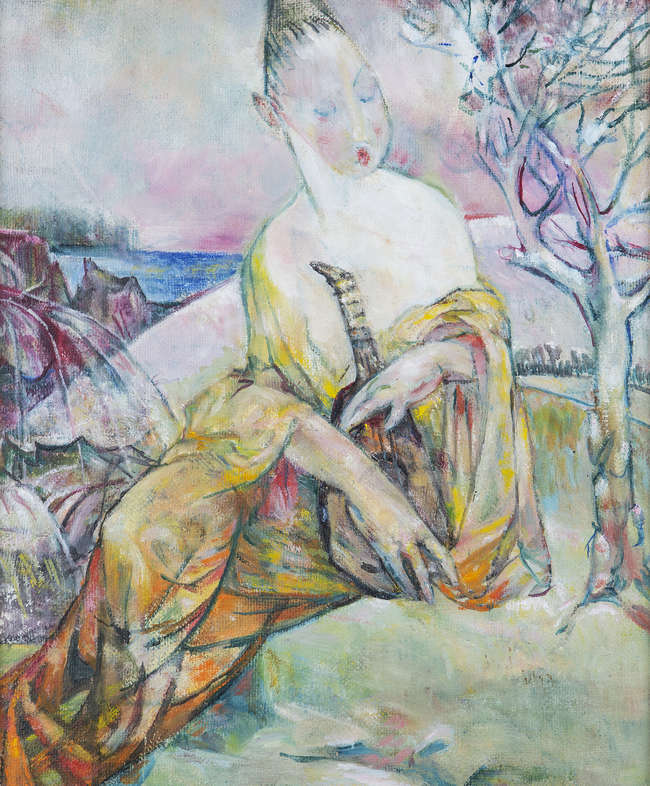
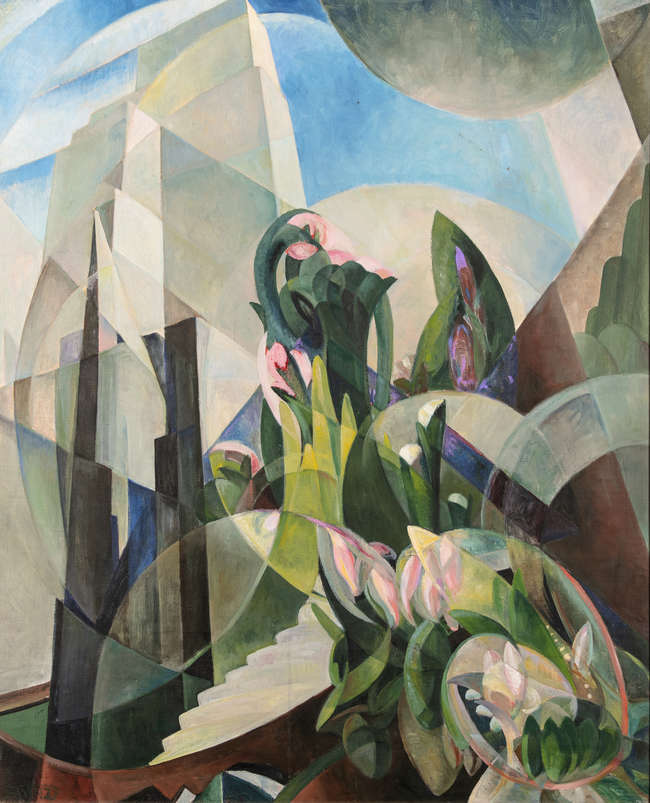

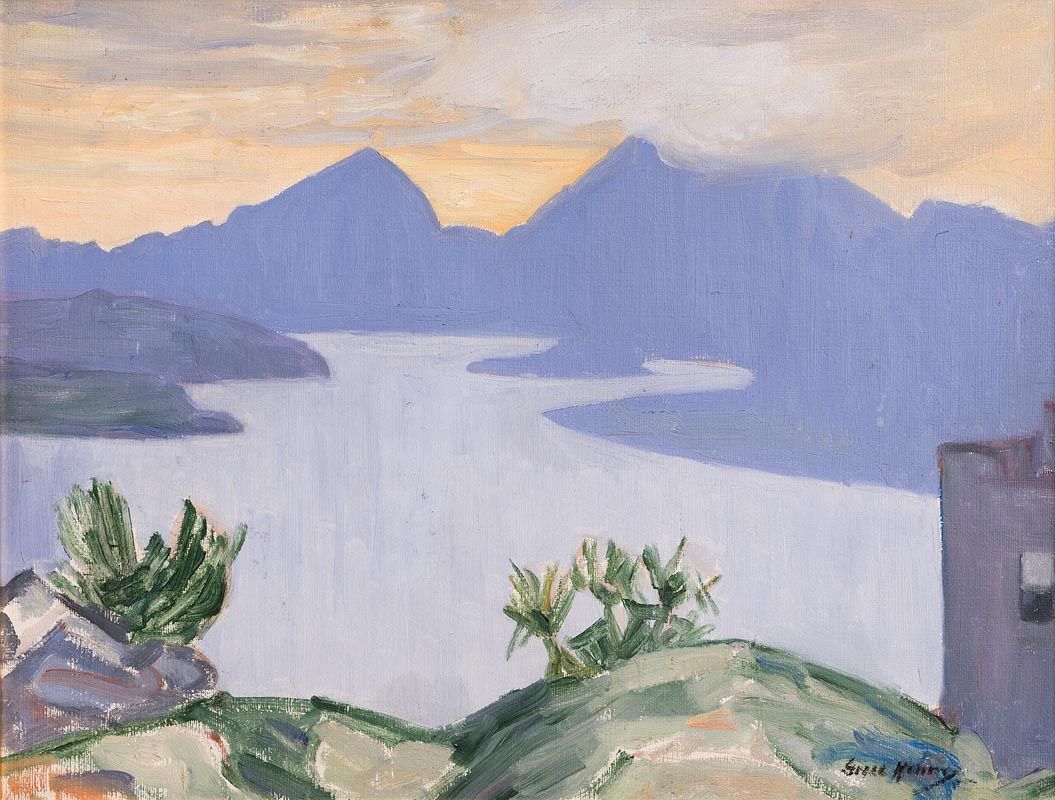
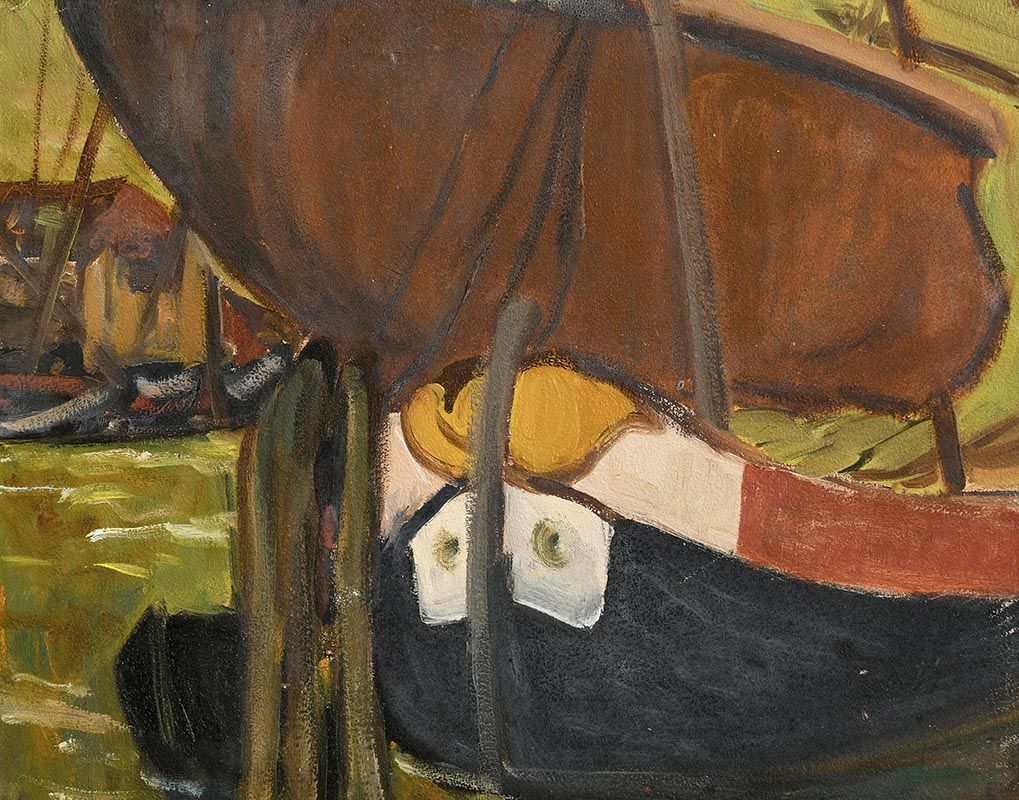
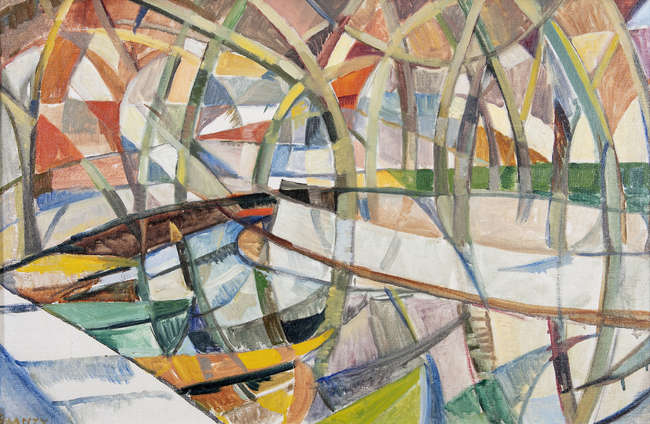
Try LotSearch and its premium features for 7 days - without any costs!
Be notified automatically about new items in upcoming auctions.
Create an alert